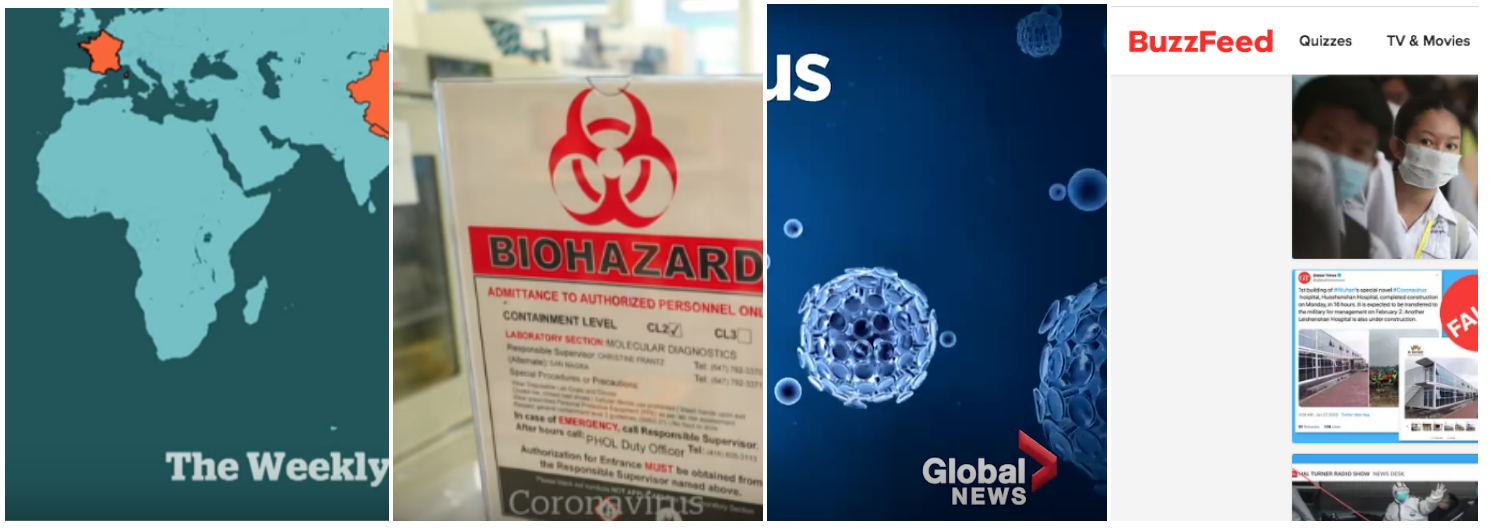Tips for journalists and media organizations in Canada covering the coronavirus
The outbreak and spread of a new strain of the coronavirus has arguably been one of the most talked about stories in the Canadian mediascape over the last few weeks. Check the homepage of any major Canadian news organization and you’re likely to see three or four stories devoted to different angles of the outbreak.
Despite the effort to stay on top of this important public health story, media organizations are providing information and news in a climate where there are internal challenges (the problem of fueling public hysteria around the crisis) and an external challenge (where individuals and organizations with vested interests are using online platforms to spread misinformation and fake news). There’s been a daily crush of new stories, but not without purpose. In addition to providing health information and reassurance that the risk in Canada remains low, reporters like Buzzfeed’s Jane Lytvynenko have taken the time to debunk harmful rumours swirling on social media, including a fake image of the Ryerson University website suggesting there was an outbreak on campus.
Others, including the Current and Global News’s Arti Patel and Olivia Bowden, are discussing the ways stigma and panic around disease outbreaks fuel racism and xenophobia. Author and educator Carianne Leung’s 2004 paper provides analysis of “how the media contributed to racializing SARS and therefore contributed to the marginalization of Chinese and Southeast/East Asian Canadian communities.”
The breadth of coverage is understandable. Media in Canada have a responsibility to cover the outbreak given its international implications, the confirmation of cases in Canada and the fact there are Canadians who live in the affected areas or who have family there.
But it’s early days, and with more cases expected, reporters will have to stay level headed as the demand for information grows. SARS, Ebola and Zika demonstrated the perils of covering a public health crisis. Exaggerated headlines or images can spread fear and amplify panic. And news organizations and reporters aren’t just trying to steer clear of a media circus – they’re now contending with misinformation spread through social media as well.
Finally, there’s the concern that this level of heightened, intense coverage early on may lead to reader fatigue. Canadians may subconsciously tune out important information later, at a time when it could be most relevant to their daily lives, depending on how the situation unfolds.
So what can reporters in Canada do to ensure poor coverage doesn’t become another symptom of the outbreak?
Sarah Everts, an award-winning science journalist and current CTV Chair in Digital Science Journalism at Carleton University, shares her tips and resource recommendations for reporting on the coronavirus:
1. Don’t be alarmist
Particularly in the age of social media, the sensational is what gets shared, but it’s the tempered message that’s often the most accurate and helpful. To dampen fear, journalists can take the time to explain why fear is so counterproductive to controlling an outbreak or pandemic.
“Fear breeds stigma, and stigma doesn’t inspire people to seek help,” Everts said. “We need people to seek help, to disclose symptoms, in order to control the outbreak.”
2. Look to public health authorities for information
Simply put, a public health emergency is not the time to crowdsource on Twitter.
“If you get in an accident, you go to the ER because they know how to handle emergencies,” Everts said. “It’s the same thing here. Public health authorities exist to handle public health emergencies. We really need to focus on them for information.”
In addition to using health officials as sources, journalists can remind the public to rely on them for information as well. This is particularly true on social media, where people are more likely to share posts with strong emotions, rather than a tempered message from a health official.
3. Numbers need context
While stats on new cases, serious cases, or presumptive cases can make a great headline, they’re misleading without context. If you’re reporting there have been more than 2,000 cases in Wuhan, China, for example, including the fact that the city’s population is more than 11 million adds an important layer of perspective.
“Giving context is going to reduce fear,” Everts said.
4. Prioritize essential info
While mainstream media organizations have filed stories on all angles of the coronavirus (how it was detected, what was done, what the situation is in other countries, etc.), journalists should devote the most attention to the essential information Canadians need in their day-to-day lives — information such as what, if anything, they should do now, who they should contact if they have family in the area and how the virus might affect travel plans.
“This is the time when the media really needs to do the bread-and-butter stories, the really important information dissemination,” Everts said. While the other angles are important, Canadians need to look to their own media for information on how the coronavirus affects them directly.
5. Avoid low-hanging fruit
For new organizations that are looking for the next new angle to advance the story, avoid low hanging fruit. In the case of the coronavirus, Everts has already noticed a few organizations which have gone to talk to SARS survivors from 2003. Given problems with how the severe acute respiratory syndrome outbreak was handled early on, she cautions that kind of comparison can be misleading unless it also includes information on what’s changed since SARS and how the coronavirus has already been handled differently following the initial outbreak.
Looking for Resources?
- The Science Media Centre of Canada has put together this list of resources for covering the outbreak.
- Access the World Health Organization’s situation updates and technical guidance here.
- Canada.ca/coronavirus has the latest Government of Canada updates and travel information.
- Infection Prevention and Control Canada has a list of cases by country.
- The Association of Health Care Journalists published questions reporters localizing the outbreak should consider.
Sherry Aske is a digital storyteller, podcast host, and former CBC Ottawa producer and journalist. Her Master's research included digital strategies and changes in the Canadian media industry.



